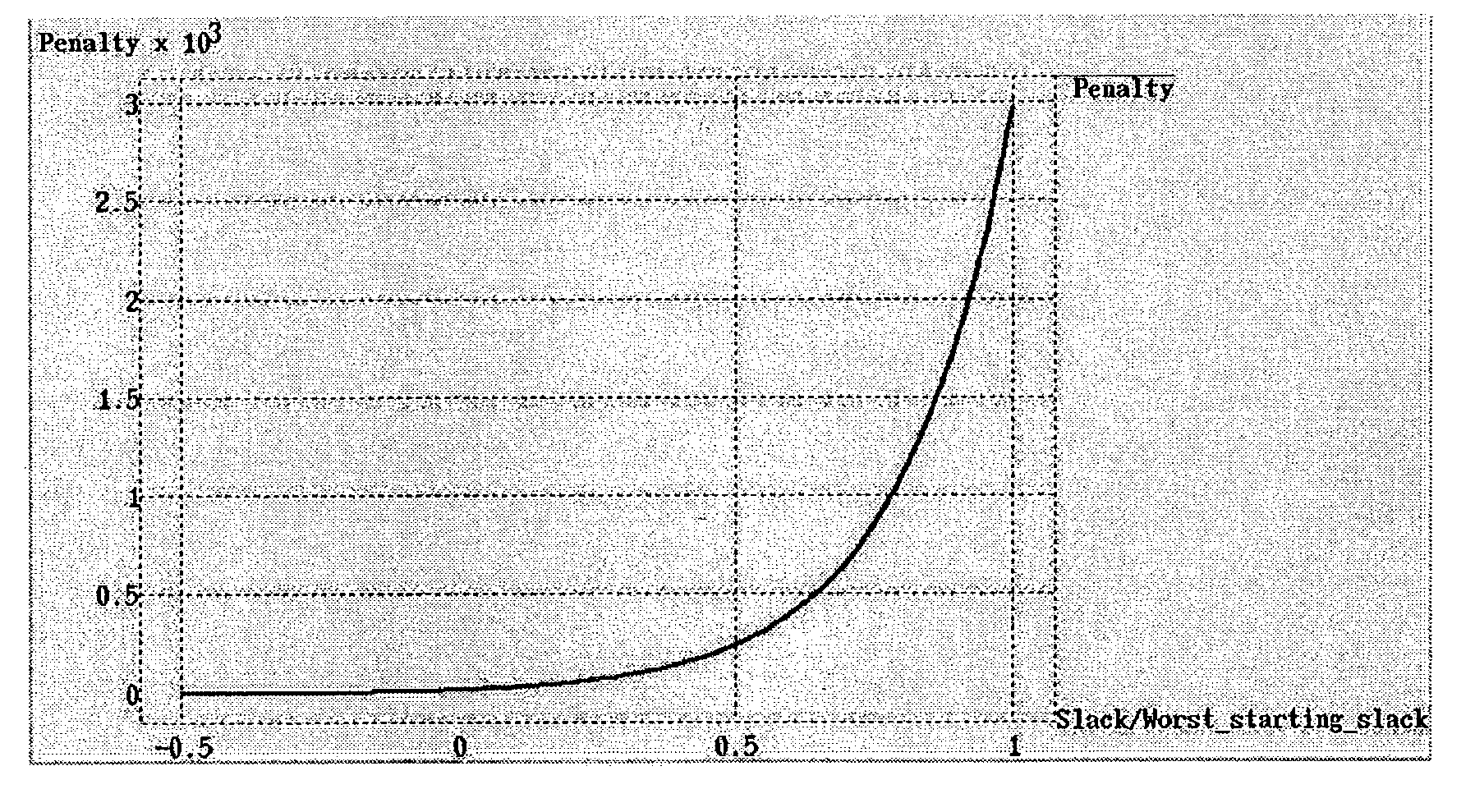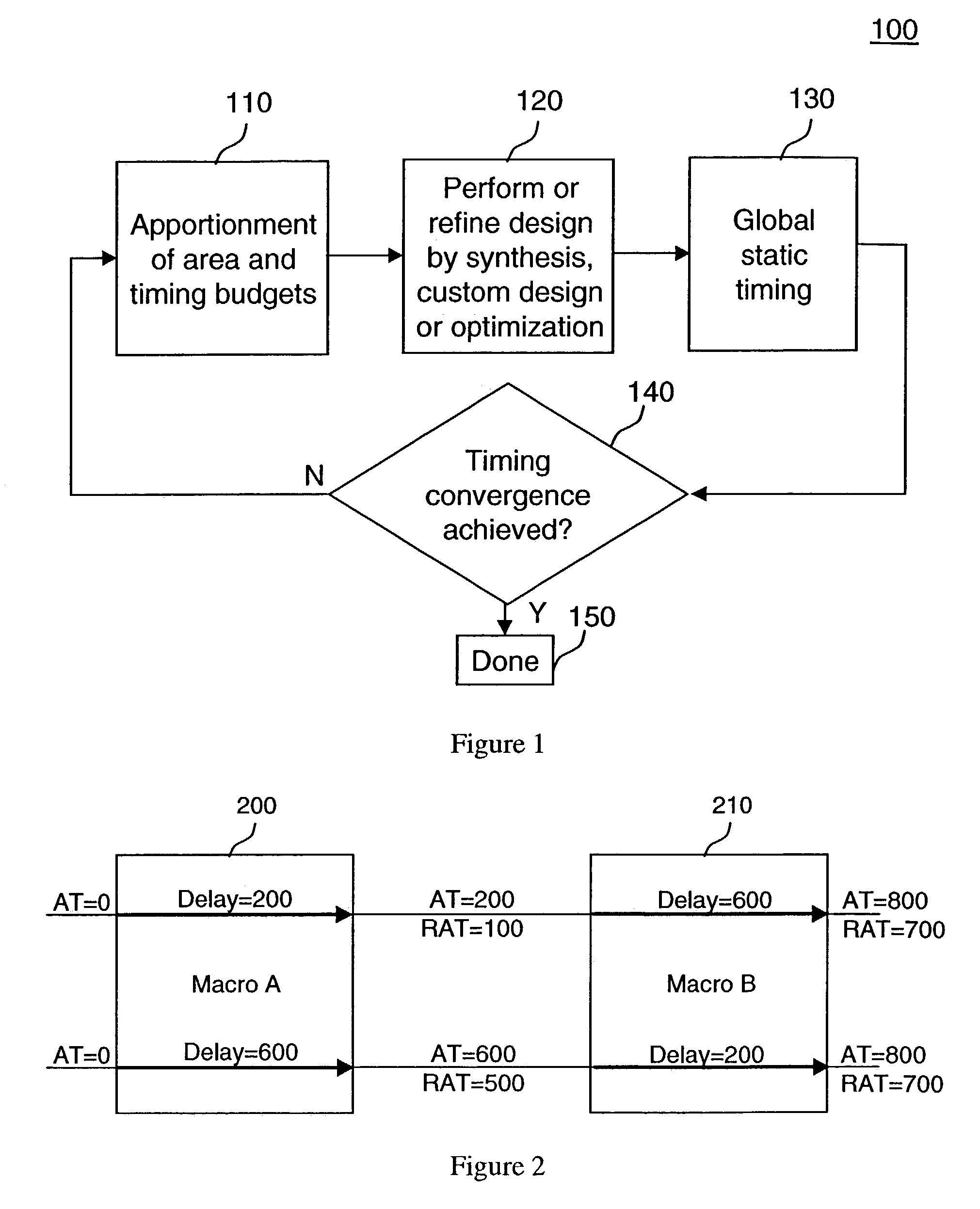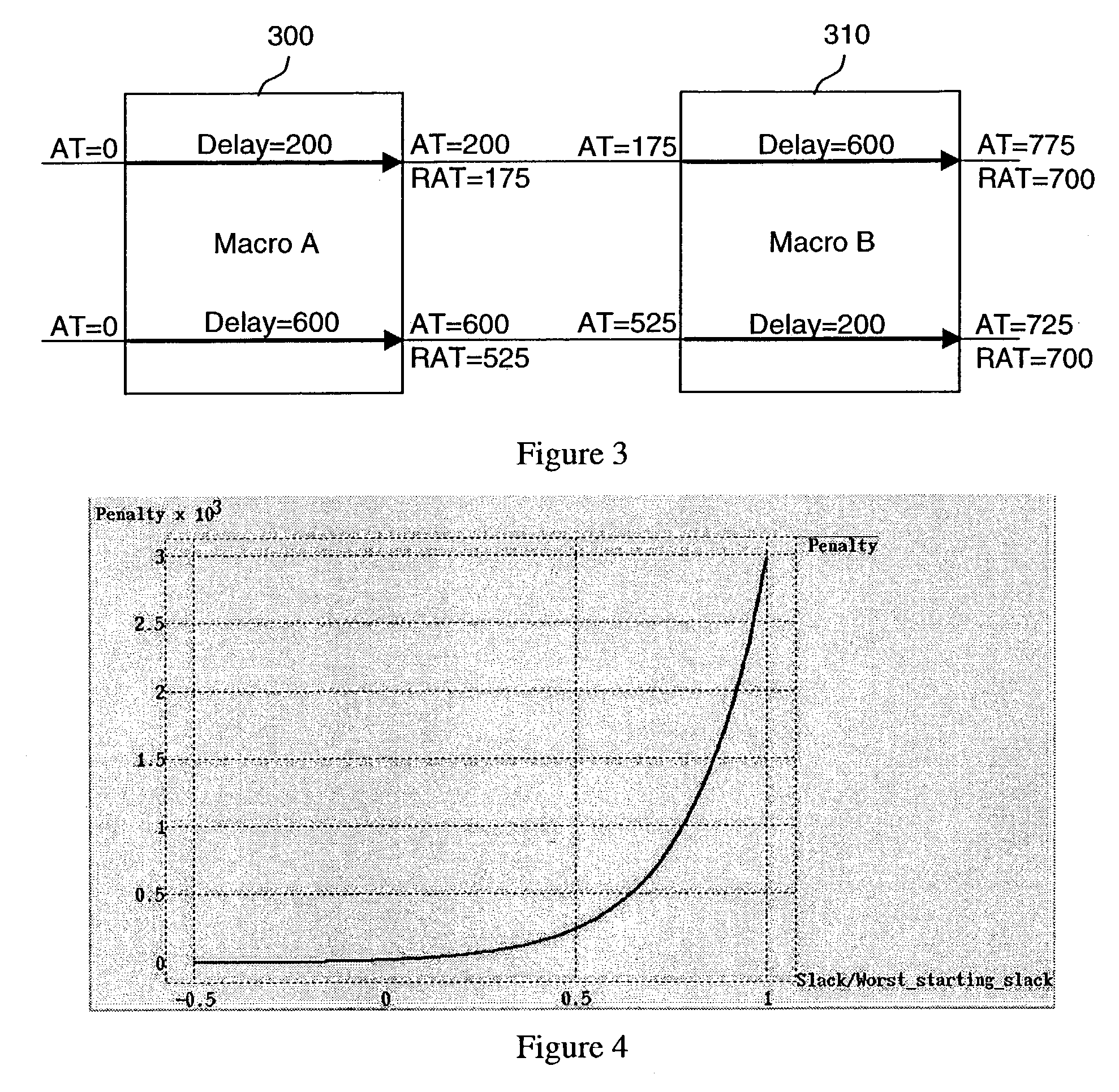Method of achieving timing closure in digital integrated circuits by optimizing individual macros
a timing closure and optimization technique technology, applied in the field of design and automation thereof, can solve the problems of imperfect apportioning process, interfering with the achievement of overall timing closure, and affecting the overall timing closure, so as to improve not only the arrival time, but also the overall timing closure
- Summary
- Abstract
- Description
- Claims
- Application Information
AI Technical Summary
Benefits of technology
Problems solved by technology
Method used
Image
Examples
Embodiment Construction
[0024]The heart of the invention is the reformulation of the objective function of any optimization that is performed by automatic means to improve individual macros. The reformulation makes the overall timing closure loop more effective and efficient. Traditional circuit optimization tools such as EinsTuner formulate the optimization problem in one of two ways, as described below. A description of EinsTuner is available in A. R. Conn, I. M. Elfadel, W. W. Molzen, Jr., P. R. O'Brien, P. N. Strenski, C. Visweswariah and C. B. Whan, “Gradient-based optimization of custom circuits using a static-timing formulation,” Proceedings of the 1999 Design Automation Conference, June 1999, pages 452–459. The description below assumes a simple combinational circuit to illustrate the detailed description of the invention. It is to be understood that the formulation can easily be extended to situations containing sequential elements including all types of latches and possibly multiple clocks by one...
PUM
 Login to View More
Login to View More Abstract
Description
Claims
Application Information
 Login to View More
Login to View More - R&D
- Intellectual Property
- Life Sciences
- Materials
- Tech Scout
- Unparalleled Data Quality
- Higher Quality Content
- 60% Fewer Hallucinations
Browse by: Latest US Patents, China's latest patents, Technical Efficacy Thesaurus, Application Domain, Technology Topic, Popular Technical Reports.
© 2025 PatSnap. All rights reserved.Legal|Privacy policy|Modern Slavery Act Transparency Statement|Sitemap|About US| Contact US: help@patsnap.com



